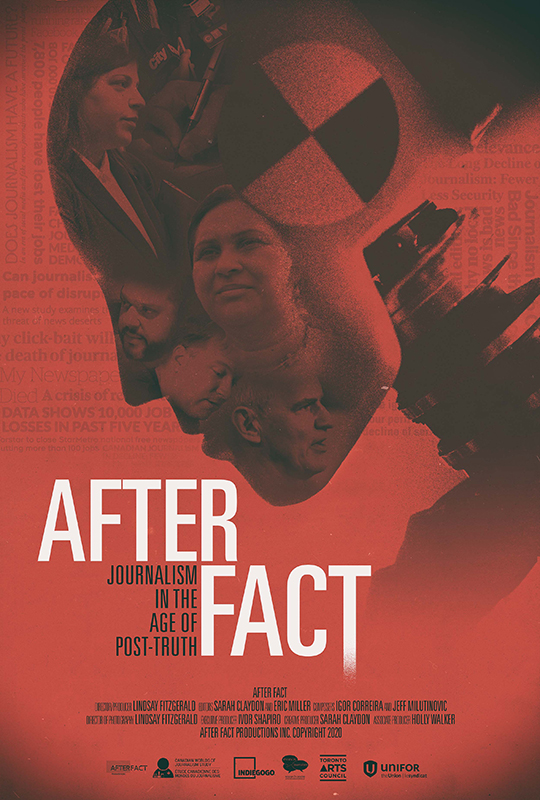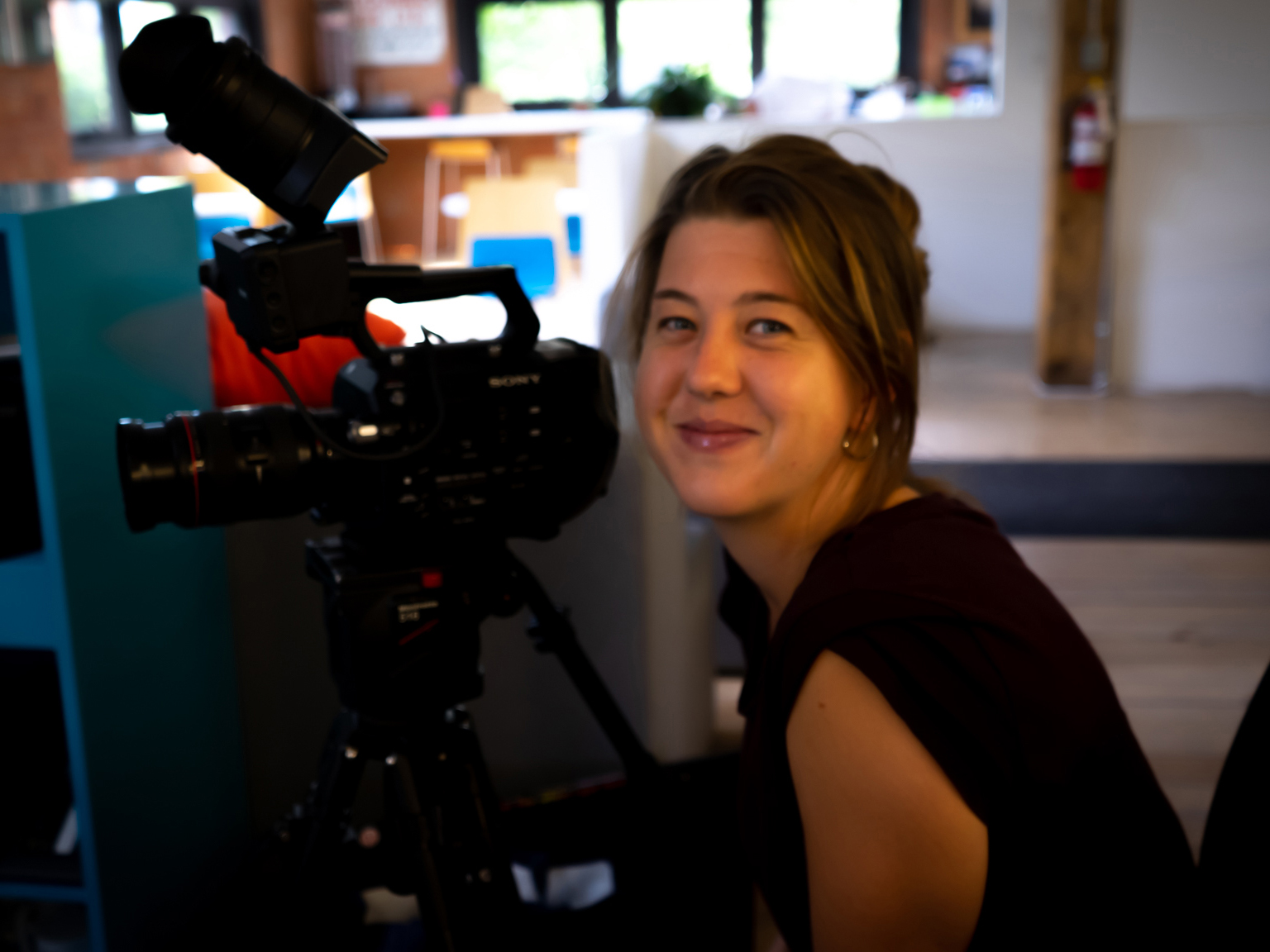A Sincere Look into the State of Canadian Journalism: After Fact Film

Journalists have been rapidly adjusting to an ever-changing and challenging industry for years. After Fact: Journalism in the Era of Post-Truth offers a behind-the-scenes look at how Canadian journalism has adapted. The film — which was directed by Lindsay Fitzgerald (RSJ ’15) and executive produced by RSJ professor Ivor Shapiro — showcases the everyday trials and triumphs of Canadian journalists during an era where uncertainty and economic crisis often plague newsrooms.
The documentary is Fitzgerald’s directorial debut and will be available for exclusive screenings along with free educational units for instructors from June 16, 2020 to June 30, 2020 at After Fact (external link) .
The film follows the Canadian journalism industry from the perspective of four journalists: CBC national investigative journalist Harvey Cashore, Brampton Guardian reporter Radhika Panjwani, Toronto Star City Hall reporter Jennifer Pagliaro, and independent Hamilton reporter Joey Coleman.
“It's an observational film — it really allows audiences to sit with the journalists and get a peek at what it's like to be in their positions at this point in time. Journalists and news organizations spent years (warning) — and are still sounding the alarm bells — that the news industry was in a state of economic crisis. What the film does best is give people a clear idea of what journalists do on a day to day basis, stripped of the glamour and grandiose type of representations,” said Fitzgerald.
Fitzgerald, who worked for the Canadian World of Journalism Study (CWJS) (external link) while studying for her bachelor’s degree in journalism and has written for various publications since graduating, says she became disillusioned after finding out that the quantity of stories she was putting out was more valued than the quality of her work.
“I took it as a personal failure before understanding it as a structural problem — and not just the fault of the news organization. The entire notion of clickbait requires audiences, who also have agency on what they decide to consume, and subsequently promote,” said Fitzgerald.
Fitzgerald believes that what is missing in the discussion of the state of journalism in Canada is more awareness regarding the emotional energy that journalists pour into their craft.
“I did genuinely come to believe that what was missing from the discussions about the state of journalism in Canada was the emotional toll it was taking on journalists themselves, most of whom do take their profession very seriously, and care a great deal about the work they do,”
Despite her initial disillusionment, her work interviewing hundreds of Canadian journalists for CWJS and following the journalists for After Fact inspired Fitzgerald to look at journalism from a different perspective.
“A lot of the journalists in the film really do not forget about the people they're reporting on, and they are committed to following issues and stories as they evolve. And I think what I've learned from watching these journalists in the film is that it's our job to follow the evolution of a ‘story’, and to report it, and to follow up on it, and to not forget about it, especially if it is an important public interest issue. That is a difficult but important part of reporting,” said Fitzgerald.
The educational component of the film, called Journalists at Work: Thinking About News in the Age of Post-Truth (external link) , includes four educational units that use findings from the reports and scenes from the film to create lesson plans for instructors to use in the classroom. Since its conception, the film included an educational component to illustrate the CWJS findings.
“From the start of creating this film, we knew it would cater to an educational audience at some point, among other audiences like festivals or broadcast. We knew that by filming with a diverse range of journalists in Canada the film could be a window into showing how journalists operate in this country. Ivor Shapiro and I hoped that presenting what we had learned and reported on from the CWJS, in an observational way we could really add value to the findings,”said Fitzgerald.
Fitzgerald said her greatest hope is that people who view the film change their perception about what journalistic losses mean and how that will affect how they experience the world.
“So, the next time a viewer reads about a newspaper layoff, they may think of one of the characters in the film who left their job at a newspaper. The implications of no longer having a journalist left to cover health, for example, in their communities might become more real,” she said.
To inquire about an educational licence to screen the full movie after June 30, please contact info@afterfact.ca or lindsay.a.fitzgerald@gmail.com.

